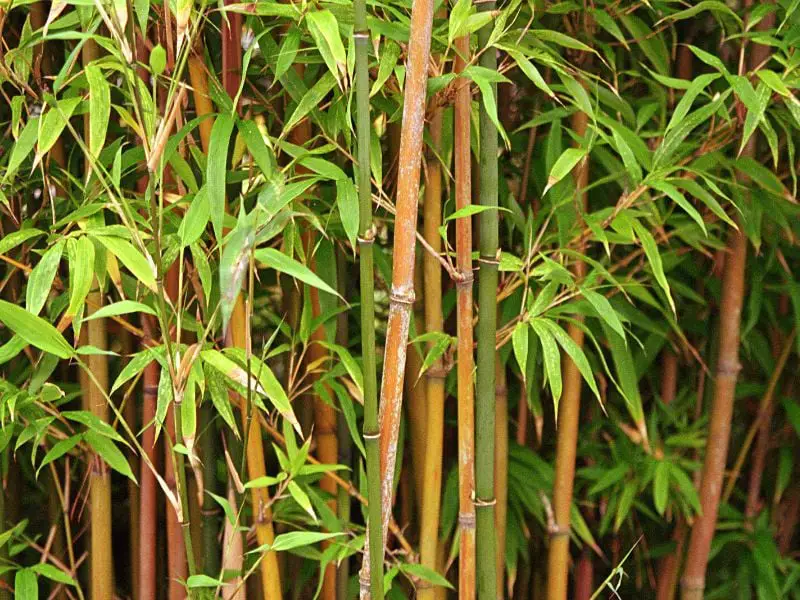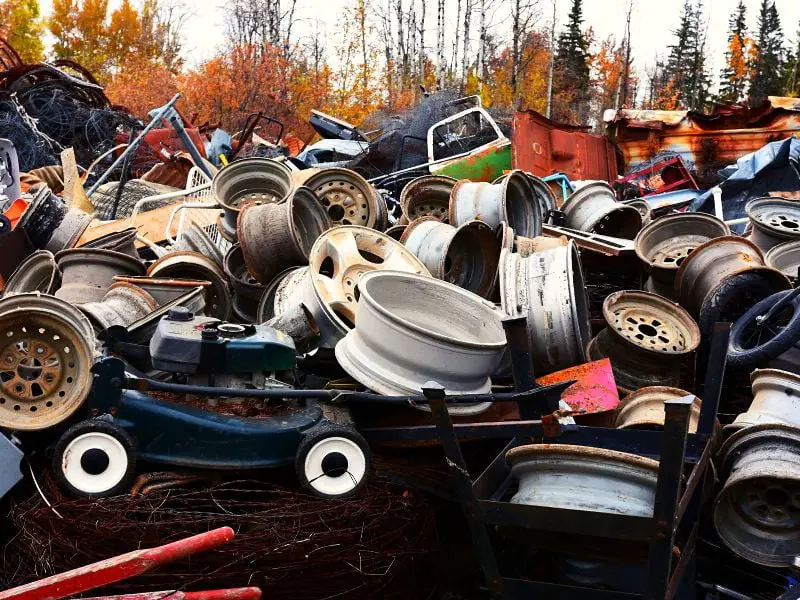With so many choices on the market, how do you choose which environmentally friendly construction materials you should use? Well, that depends entirely on what you need for your project. However, some general things to keep in mind will help you make your decision easier.
This article will cover some of the more common eco-friendly materials and give you an idea of how each one works and its performance.
The Importance of Using Eco-Friendly Construction Materials
With so many harmful materials being used for building purposes, it is crucial to focus on environmentally friendly alternatives. Building an eco-friendly home can help contribute to a better environment and living conditions for the homeowner, as green buildings use healthier materials.
Eco-friendly building materials are becoming increasingly prevalent worldwide as more people become aware of the harmful effects of conventional building materials and products. These materials are also cheaper and more readily available than traditional building materials and products. Using green materials in your home’s construction is one of the best ways to go green and help protect the environment.

How to Choose Environmentally Friendly Materials for a Green Home?
There are so many options for eco-friendly construction materials that it’s hard to know which one is right for you. Fortunately, there are just a few general rules to remember when choosing the perfect eco-friendly building materials for your project.
Consider your goals for the project. Are you looking to recycle? Reduce the use of energy? Recycle existing materials? Use recycled materials? Or do all of the above? All these questions are essential, but keep your highest priorities when considering your options. Then consider your budget. What’s your budget for this project? How much investment are you willing to put in? And more questions in between.
When you have the answer to the fundamental questions, it’s time to choose a material that does not release harmful VOCs into the air. VOCs are the chemicals in paint, lacquers, stains, adhesives, and caulks. These chemicals can cause health effects like eye and throat irritation, headaches, and nausea. They can also contribute to smog and acid rain, both harmful to the environment. Choose paints with low VOCs and caulks made with natural latex or silicone instead of petroleum-based products. Also, ensure your products are recyclable or made from renewable resources like cellulose.
Second, look for durable materials that are easy to recycle or reuse. Materials that are made from recycled content are one of the best choices for a green home. By reusing a material, you are reducing the amount of waste going into the local landfill.
Consider sunlight and visual quality when choosing a material for your home’s exterior walls. UV rays from sunlight can cause the fading and degradation of exterior paint over time, so choosing paint with a low VOC content and one that can withstand the hot sun is essential. The color you choose is also important. While green paint is trendy right now, darker colors made from natural materials (like shale) are the most resistant to sun damage and fading.
What are the Best Materials for Eco-Friendly Home Construction?
The effects of climate change are becoming increasingly evident worldwide, as are its effects on the planet’s ecosystem. With the accelerated depletion of natural resources and the ever-increasing demand for construction, the construction industry desperately needs a sustainable and eco-friendly material that can replace traditional building materials.
With so many choices in building materials available to builders and homeowners, it can be challenging to choose the most environmentally friendly materials for the home. Although traditional materials like wood, brick, and concrete have traditionally dominated the home building industry, other sustainable and environmentally friendly materials are now available. These alternative materials are becoming more popular in home building due to their environmental benefits, as well as their durability and affordability. Check it out!
1. Cob
Cob houses can be built quickly, cheaply, and effectively using natural materials and techniques. The cob house technique uses clay soil (or loam), sand, and a lime-based binder to create solid but lightweight walls. These properties mean that cob is well suited to building structures in areas with poor ground conditions or earthquake zones, as it can support itself without foundations.
Cob wall construction is also very cheap and straightforward and can be recycled easily and abundantly. Cob has been used in building sustainable structures from homes to churches to schools for thousands of years and is popular because of its cost-effectiveness and eco-friendliness. It can also be easily shaped into almost any form, such as arches or domes.
2. Recycled Steel
Compared with traditional construction materials, new materials made of recycled steel are more durable, stronger, safer, environmentally friendly, and more cost-efficient. The steel used in conventional construction produces 8% of the CO2 emissions in the world. Steel recycling is the most effective way to help reduce emissions from steel production.
Although steel recycling is not a new practice, it is becoming more widely used as steel and concrete prices rise. Using recycled steel requires less energy and emits fewer greenhouse gases than traditional steel production methods. New buildings, bridges, and roads can incorporate recycled steel into their designs to help reduce carbon emissions and protect the environment.

3. Bamboo
Compared with wood, bamboo is a renewable resource and requires less water and space to grow. Furthermore, bamboo is more stable than wood well. The bamboo plant can be easily harvested; therefore, the supply is not threatened, unlike trees.
This material is also lighter in weight than wood and reduces construction costs. The bamboo installation can also be done faster than wooden structures due to its lightweight and tensile strength properties; therefore, one can expect lower construction costs and shorter construction time.
Bamboo is one of the ideal materials to use in sustainable construction. One acre of bamboo plantation can release 62 tonnes of oxygen per acre per year and absorb 88 tonnes of carbon dioxide per year. Bamboo can be grown within 2-3 months and up to 20 ft in height.
4. Straw Bales
Straw bales are an eco-friendly material because they are 60 percent to 80 percent agricultural waste. This makes straw bale houses considered green construction, as they use available materials to build with and cut down on waste going to a landfill.
Straw bale houses consist of layers of straw bales with insulation. The straw bales provide structure for the home, and the insulation stabilizes the temperatures inside the home, reducing the energy used to heat and cool the home. This saves on the cost and time required to heat or cool the house adequately.
5. Cork
Cork comes from the bark of cork oak trees and is one of the most sustainable materials in the world. The bark is stripped every nine years, allowing new bark to grow back in its place naturally. Cork is also highly durable, making it a popular choice for flooring and countertops. Cork is fire-resistant and can withstand extreme heat and cold, making it perfect for houses and other buildings.
6. Reclaimed Wood
Reclaimed wood is wood collected from old structures, such as barns and houses, and recycled for use in new designs. Depending on the customer’s preferences, the wood may be milled, refinished, or left in its original state. Reclaimed wood is an eco-friendly alternative to new wood for various reasons:
- It is much cheaper as reclaimed lumber is cheaper than new lumber.
- It lasts longer and is prone to minor warping and rotting.
- It is more sustainable as trees are not cut down to make new lumber.
Reclaimed wood is growing in popularity because of its fast installation time, aesthetic appeal, and affordability.
7. Stone
Compared with other materials, such as wood, stone has many advantages. Stone is recyclable, durable, and environmentally friendly. The durability of stone means it can last many years without needing to be replaced, and the material is recyclable. Stone is naturally weather-resistant, which means it does not rot or stand out from weather damage and is resistant to damage by insects or vermin.
Many stone types can be used for construction, and they come in many different colors. Stone is aesthetically appealing, as it fits in well with its surroundings and can add character to an area where it is used.

8. Mycelium
The history of mycelium has such significant value that it is considered sacred in some cultures like Hinduism and Buddhism and is regarded as an aid to meditation, Buddhism, and Hinduism. In Buddhist and Hindu cultures, mycophilia is associated with Heaven and Earth, supreme forms of nature. Where there is living mycelium, there shall also be heaven and Earth.
The mycelium helps to improve soil quality and thus, plays a vital role in the cultivation of plants. The properties of mycelium are such that it is resistant to pests and diseases and therefore not affected by them at all. Mycelium is a blessing to farmers who use it as an alternative to synthetic pesticides and fungicides. Mycelium is also widely used for construction purposes.
Frequently Asked Questions (FAQs)
Author’s Note
Going green benefits everyone, whether you’re constructing a brand-new house or just trying to incorporate a few more environmentally-conscious practices into the space, you already occupy. You, your home, and Mother Nature will enjoy the green improvements.


4 thoughts on “Construction Materials That Are Environmentally Friendly: 8 Best Choices”